
Hyphessobrycon is a genus of freshwater fish in the family Characidae. These species are among the fishes known as tetras. The genus is distributed in the Neotropical realm from southern Mexico to Río de la Plata in Argentina. Many of these species are native to South America; about six species are from Central America and a single species, H. compressus is from southern Mexico.

Astyanax is a genus of freshwater fish in the family Characidae of the order Characiformes. Some of these fish, like many of their relatives, are kept as aquarium pets and known collectively as tetras. With around 150 described species and new ones being described yearly, this genus is among the largest of the entire order; Hyphessobrycon also has more than 145 species and which one is larger at any one time depends on whether more species have been recently described in one or the other. The blind and colorless cave tetra of Mexico is a famous member of the genus, but its taxonomic position is disputed: Some recognize it as part of the Mexican tetra and this is supported by phylogenetic evidence, but others recognize the cave form as a separate species, A. jordani.
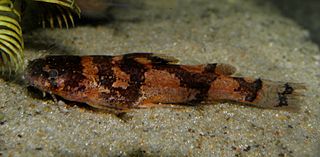
Microglanis is a genus of fish in the family Pseudopimelodidae native to South America. This genus has the widest distribution within its family, with species ranging from the Guianas to Venezuela; western slope of the Andes in Ecuador and Peru to the Río de La Plata basin in Argentina. They occur eastward to the Orinoco and Amazon basins. It is also present in the eastern coastal rivers of Brazil.
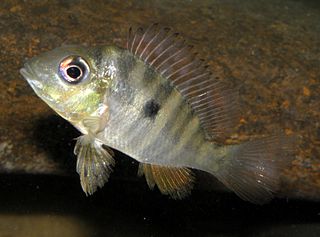
Gymnogeophagus is a genus of cichlid fishes from South America, where they are known from various river basins in southern Brazil, Paraguay, Uruguay and northern Argentina. They are part of a group popularly known as eartheaters.

Hemiancistrus is a genus of suckermouth armored catfishes. These species are native to South America. The taxonomy of this genus is complex and unclear, and major work has to be done. Many of these fish are popular aquarium fish.
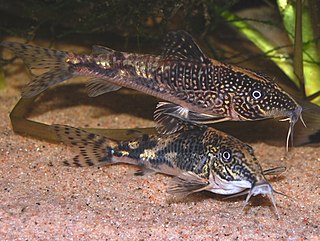
Scleromystax is a genus of fish in the family Callichthyidae endemic to small tributaries from several coastal river basins draining the southern and southeastern regions in Brazil. Most of the species of Scleromystax are highly sexually dimorphic; males have developed odontodes inserted in fleshy papillae on the preopercular-opercular region and the dorsal and pectoral fins are 2–3 times as long as those of females. S. salmacis is an exception, as its sexually dimorphic features are subtle and non-remarkable.

Odontesthes is a genus of Neotropical silversides. They are found in fresh, brackish and salt water habitats in the southern half of South America, as well as the offshore Juan Fernández and Falkland Islands. Additionally, O. bonariensis has been introduced to other continents.

Bryconamericus is a genus of characins found in Central and South America.
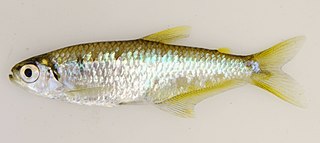
Diapoma is a genus of characins from tropical South America.

Hemibrycon is a genus of characins. They are mainly found in South America, Trinidad in the Caribbean), and H. dariensis of east Panama.
Kolpotocheirodon is a genus of characins endemic to the uppermost Paraná, Paraguaçu and São Francisco basins in the central Brazilian Plateau. They feed on small invertebrates. Kolpotocheirodon reach up to around 3 cm (1.2 in) in standard length. Both species in the genus are considered threatened by Brazil's Ministry of the Environment.
Odontostilbe is a genus of characins from tropical Central and South America, with 19 currently recognized species:

Phenacogaster is a genus of characins from South America, with 20 currently described species:
Pseudocorynopoma is a genus of characins from tropical South America.
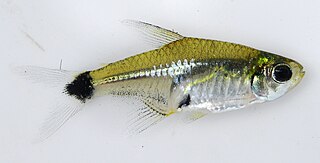
Serrapinnus is a genus of characins from tropical South America.
Spintherobolus is a genus of characins that are endemic to river basins in southern and southeastern Brazil from Santa Catarina to Rio de Janeiro. All four species in the genus are considered threatened by Brazil's Ministry of the Environment. They are small fish, up to 6.1 cm (2.4 in) in standard length.
Xenurobrycon is a genus of characins from tropical South America.
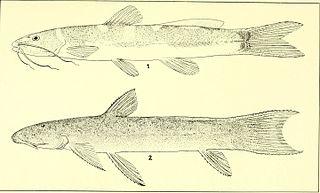
Rhamdella is a genus of three-barbeled catfishes native to South America.
Isaäc Jan Hendrik Isbrücker is a retired Dutch ichthyologist who specialised in the scientific classification of South American catfish (Loricarioidea).
Trichomycterus balios is a species of pencil catfish endemic to Brazil, where it occurs in the upper portion of the Das Antas and Caí river basins, and the Mampituba river basin, in the state of Rio Grande do Sul. This species reaches a maximum length of 10.1 centimetres (4.0 in) SL.












